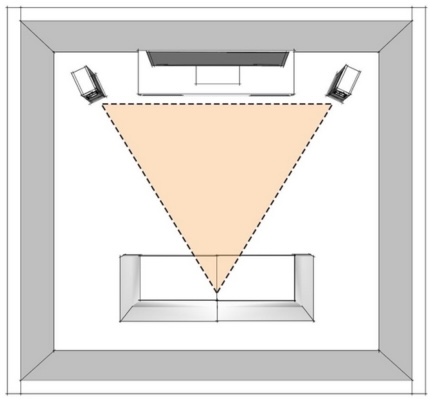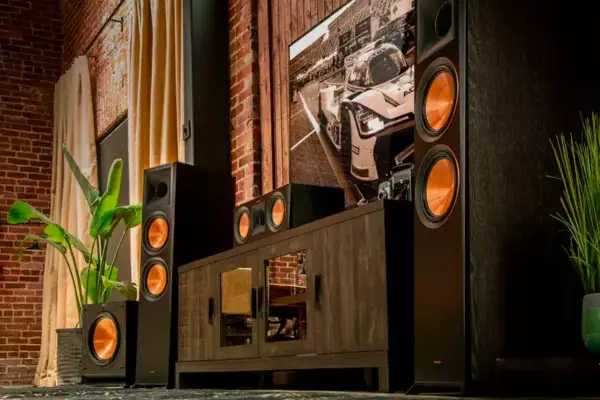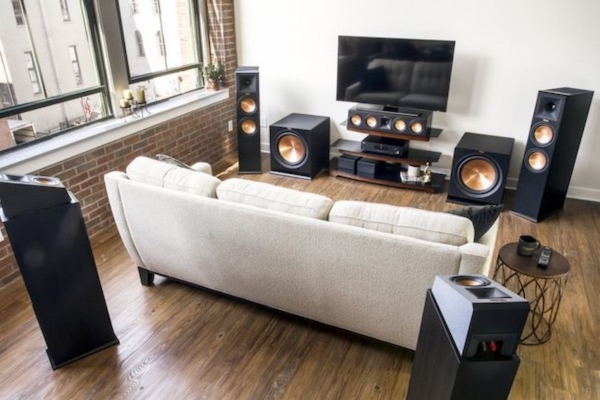Tower Speaker Placement for Music and Movies: A Complete Setup Guide
High-quality tower speakers are engineered to deliver powerful, full-range sound, but without proper placement, even the most advanced models can underperform. With correct Tower Speaker placement, you can create a vivid stereo image, drawing listeners into the recording with precision and spatial depth.
The way sound interacts with a room—bouncing off walls, floors, and furniture—can either enhance or distort the listening experience. Factors such as distance between speakers, toe-in angle, and proximity to walls all influence clarity, imaging, and bass response.
Whether setting up a dedicated listening area or integrating speakers into a shared living space, understanding the principles of tower speaker placement is essential. With careful planning and a few expert tips, you can unlock the full potential of your setup.

Understanding the Stereo Image and the Sweet Spot
When correctly positioned, a pair of tower speakers can deliver what’s known as a stereo image—the auditory illusion of instruments and vocals appearing from specific points in space, even where no physical speaker exists.
This effect relies heavily on the listener sitting within the sweet spot, the area equidistant from both speakers where the stereo image is most coherent and accurate.
In this optimal listening position, vocals often seem to originate from the center between the two speakers, while other sounds appear to extend beyond their physical boundaries.
This spatial realism not only enhances music playback but also benefits television and film content, especially older material mixed in stereo and modern soundtracks that use tower speakers to carry musical scores and ambient effects.
Speaker Positioning Relative to One Another
To create an effective stereo triangle, the front left and right tower speakers should be placed at a distance equal to their spacing from the primary listening position. For example, if the listener sits eight feet from the speakers, the towers should be positioned approximately eight feet apart from one another, forming an equilateral triangle.

Adjustments may be needed for larger or smaller rooms. In expansive environments, increased spacing helps maintain imaging, while in tighter spaces, reducing the distance between speakers can preserve clarity.
Toe-in—angling the speakers inward toward the listener—enhances imaging even more. In smaller rooms, more toe-in typically sharpens focus, while in larger spaces, a reduced toe-in can make for a broader listening area.
In shared or multi-purpose rooms, when ideal spacing isn’t practical, a dedicated listening chair placed at the correct spot can serve as a solution for critical listening sessions, then be moved aside when not in use.
Placement Within the Room: Managing Boundary Interactions
Speaker performance is heavily influenced by proximity to walls, corners, and furniture. These boundary interactions affect not only bass output but also the clarity and imaging of the soundstage. Optimizing tower speaker placement within the physical room is essential for balanced and accurate playback.
One of the most important factors is port orientation, which determines how low-frequency energy is projected into the space:
- Rear-ported speakers: These models emit bass energy from the back. Placing them closer to a wall tends to boost low frequencies, but can also muddy the sound. Ideally, rear-ported designs should be positioned at least two feet from the rear wall to maintain tight, controlled bass response.
- Front-ported or bottom-ported speakers: These allow for greater placement flexibility, as the bass is directed forward or downward. These designs perform more consistently when placed closer to a rear wall, making them better suited for constrained spaces where pulling speakers away from boundaries isn’t feasible.
Symmetry also plays a key role. The distance between each speaker should be placed at a distance equal to their spacing from the primary listening position. For example, if the listener sits eight feet from the speakers, the towers should be positioned approximately eight feet apart from one another, forming an equilateral triangle.
Likewise, it’s important to keep the area between the speakers and the listening position clear of tall objects. Obstructions can interfere with high-frequency dispersion and degrade overall imaging.

Room Acoustics and the Role of Acoustic Treatment
Even after optimizing your tower speaker placement, the acoustic properties of the room continue to influence how a system performs. Reflections, resonances, and absorption characteristics all shape what the listener hears.
The first priority is controlling early reflections—those that bounce off walls, ceilings, or floors and reach the ears milliseconds after the direct sound. These reflections can blur imaging and reduce clarity.
The mirror method is a reliable technique: move a mirror along the side walls while seated in the listening position, and mark any spot where the speaker’s reflection is visible. These are ideal locations for acoustic panels, which absorb the reflected sound and help preserve detail.
For low-frequency control, bass traps placed in the corners are highly effective. These help reduce standing waves and excessive bass buildup that can cause certain notes to sound boomy or indistinct.
Diffusers placed on rear walls further improve the listening environment by scattering sound energy instead of absorbing it, maintaining liveliness without creating harsh reflections.
Soft furnishings like rugs and curtains can also help by passively reducing mid- and high-frequency reflections. Even small improvements in acoustic treatment can result in significantly better clarity, balance, and soundstage precision.
Calibration Tools and Speaker Optimization Software
For those seeking precision, modern calibration tools can dramatically improve speaker performance within a given space. These systems analyze the frequency response and time alignment of your setup, helping to address issues caused by room acoustics or imperfect placement.
Room measurement software such as Room EQ Wizard (REW) allows users to generate detailed graphs showing how speakers interact with the room, highlighting peaks, nulls, and phase anomalies. Paired with a measurement microphone, REW is ideal for those comfortable with hands-on analysis and manual adjustments.

Many AV receivers come equipped with automatic calibration suites such as Dirac Live, Audyssey MultEQ, or Yamaha YPAO. These use test tones and a supplied microphone to measure speaker response across multiple seating positions, then apply digital signal processing (DSP) to correct imbalances.
While some purists prefer a completely analog chain, even in stereo setups, a basic SPL meter or smartphone app can help match speaker levels and fine-tune positioning.
Step-by-Step: Achieving Optimal Placement
- Establish the listening triangle: Begin by placing the speakers to form an equilateral triangle with the listening position. Use a tape measure to ensure symmetry.
- Set distance from rear wall: Based on the speaker’s porting, adjust how far they sit from the wall behind them. This helps balance low-frequency output without overemphasizing or under-delivering bass.
- Align Speaker Height: Ensure the tweeters are at ear level when seated. This preserves clarity and imaging.
- Adjust toe-in: Experiment with toe-in angles based on the manufacturer’s recommendations. Some suggest aiming the speakers directly at the listener’s head, while others recommend a milder angle where the speaker axes cross slightly behind the listening position.
- Level Match Your Speakers: Use an SPL meter or smartphone app to ensure both speakers are outputting sound at similar levels, especially if your room is asymmetrical.
- Test and fine-tune: Use a familiar piece of music with wide dynamic and stereo range. Keep one speaker fixed and adjust the other gradually to detect improvements in imaging, tonal balance, and clarity. Continue tweaking until a balanced and immersive soundstage is achieved.
Tower Speaker Placement: Final Thoughts
Proper tower speaker placement is a nuanced but essential part of any high-fidelity audio setup. The left and right channels anchor the entire system, contributing to a wide range of content from music to film. Achieving a strong stereo image, aligning with the room’s acoustics, and understanding how port design affects positioning all play critical roles in shaping the listening experience.
Once foundational guidelines are in place, allow room for experimentation. Slight adjustments can lead to significant sonic improvements. Precision, patience, and a trained ear will transform a good setup into an extraordinary one.

I am a passionate and skilled car audio enthusiast with 15 years of experience in the industry. My journey started when I replaced my first set of factory car speakers, sparking a deep love for high-quality sound. Since then, I have worked as a representative for renowned brands like Kenwood and Alpine.
With a background in both retail and distribution, I have developed a comprehensive understanding of the car audio market. Currently a certified (MECP) installer in the Mobile Electronics industry, my expertise lies in delivering top-notch audio installations. My knowledge, coupled with my genuine passion, makes me the go-to professional for all car audio needs.
